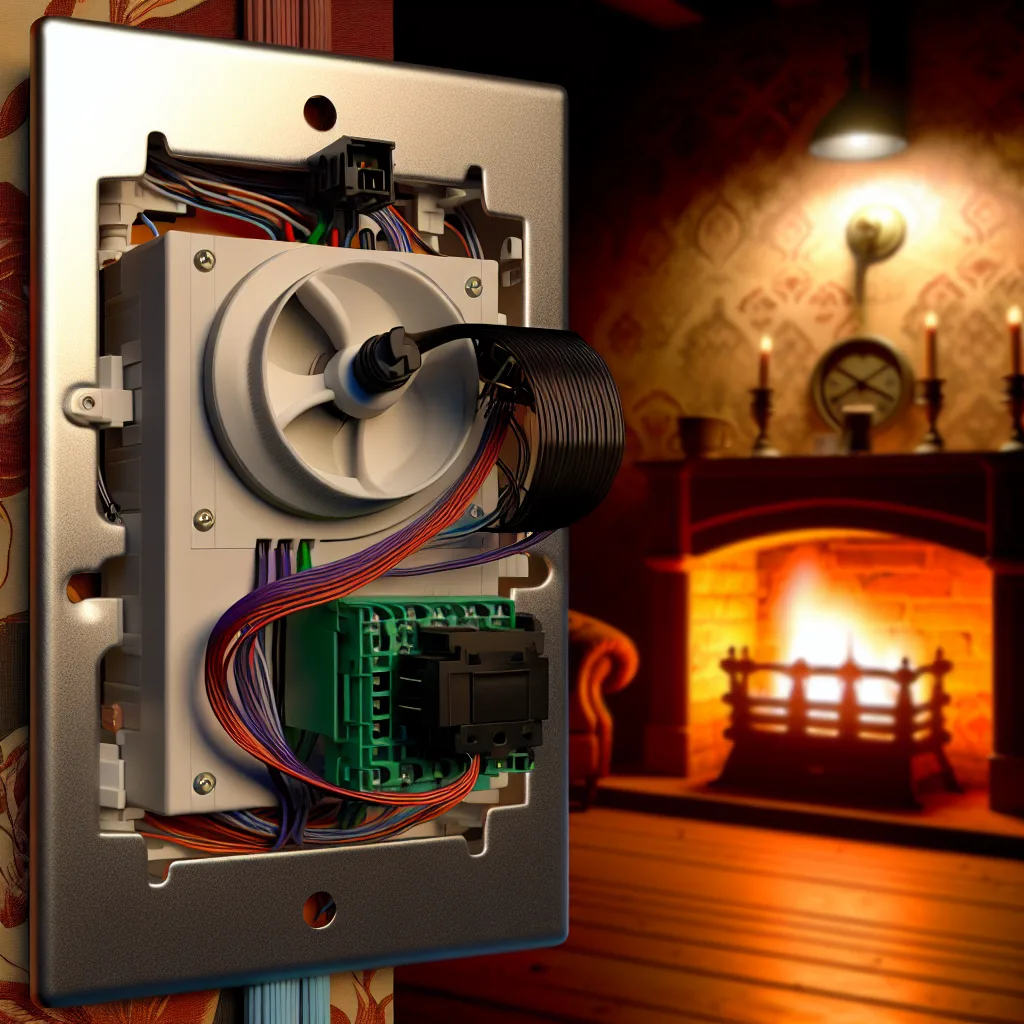Navigating the challenges of controlling an old gas fireplace fan with modern smart switches
If you’ve ever tried upgrading an older gas fireplace fan to a smart control, you might have run into some unexpected quirks. I recently wrestled with replacing my fireplace’s traditional fan switch with a smart one, and let me tell you, it wasn’t as straightforward as swapping out a ceiling fan controller. The term I kept coming back to was “smart fireplace fan switch”—because that’s really what I was hunting for, a device that plays nice with my fireplace motor.
Why Your Fireplace Fan is Different
First off, the fan in your fireplace is often an exhaust fan using a shaded pole motor. That’s not the same as your typical ceiling fan motor. This motor type reacts differently to speed controls because it’s designed to handle exhaust air, not circulate indoor air. So when I installed a smart fan switch designed for ceiling fans, it only ran the fan well at full speed. At lower speeds, it sounded off—kind of like the motor was struggling or getting a weird signal.
This happens because most smart fan switches modulate fan speed by controlling the motor’s amperage differently than traditional dimmer switches. However, some dimmer switches can surprisingly work better on these exhaust motors, though they aren’t recommended for ceiling fans. It’s a bit of a guessing game which switch will give you the smoothest performance.
Choosing the Right Smart Fireplace Fan Switch
So, is there a truly compatible smart switch for a fireplace exhaust fan? The short answer: Yes, but it’s not one-size-fits-all. Here’s what I learned:
- Identify Your Motor Type: You want to confirm if your fan uses a shaded pole motor, as many fireplace fans do. This info helps guide your choice of switch.
- Look for Switches Specifically Rated for Exhaust Fans: Some manufacturers make smart fan switches designed for these motors, ensuring better performance and smoother speed control. For instance, Leviton has switches that work with shaded pole motors, but as I found, results could vary depending on the setup.
- Test Before You Commit: If you’re able, try a dimmer switch—not officially recommended for fans—but which might work better in your case. My testing showed a dimmer switch running smoother than the fan switch, despite what the docs say. Just be cautious—dimers aren’t typically made for motors.
Alternative: Adding a Smart Switch Downstream
Another idea I explored was whether I could use my existing fan control switch and simply add a smart switch downstream or as an on/off controller. The goal here is not to control the motor speed directly with the smart device but to control power to the whole assembly, letting the original switch handle speed.
This approach can work if wired correctly, essentially letting the original fan control do what it does best while adding wireless on/off capabilities. It’s a good workaround when a perfect smart fan switch solution isn’t available.
Final Thoughts
Upgrading an older fireplace fan with a smart fireplace fan switch requires a bit of trial and error and understanding your motor’s unique needs. Remember, these fans are different from ceiling fans, so the switches designed for those won’t always fit the bill.
If you want to dive deeper, check out Leviton’s fan switch compatibility guide or read about shaded pole motors on HowStuffWorks. These resources helped me make sense of what was happening.
In the end, patience and testing can lead you to the right setup. Whether it’s a smart fan switch made for exhaust fans, a dimmer switch that unexpectedly works better, or a smart switch controlling power downstream, there’s usually a way to get your fireplace fan smarter and more convenient.
If you’re tinkering with your own setup, take all necessary safety precautions and, if unsure, consult an electrician. After all, a warm and smoothly running fireplace fan makes for a cozier home, and that’s worth the extra effort!
